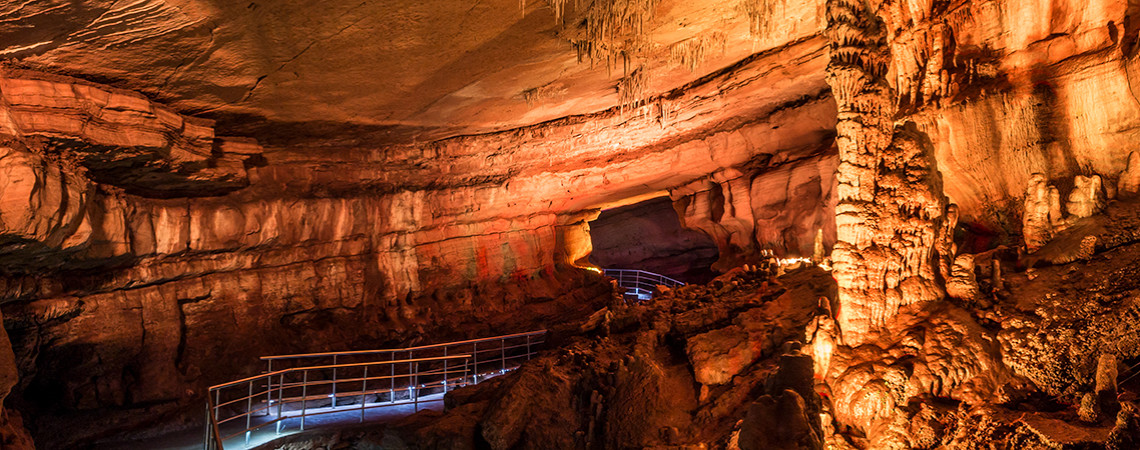Sataplia is a rather small cave located in Tskaltubo, Georgia. It is famous for fine speleothems and the dinosaur footprints nearby. The tour enters the through-cave on one hillside, crosses the hill underground and then goes back on the surface past the dinosaur footprints.
The cave is named after Mt. Sataplia (494m), an extinct volcano, which is now the Nature Preserve. The preserve was intended to protect the five karst caves of the area and the dinosaur footprints. At the moment there are 200 footprints known, found in two different layers of the Cretaceous limestone. The 30cm long footprints of the lower layer belong to an unknown predator, the 48cm long footprints of the upper layer to an ornitopod herbivore.
The Sataplia karst cave lies 6 km north- west of Kutaisi within the Sataplia State preserve (which occupies an area of 500 hectares). The 300 m long, 10 m high and 12 m wide cave abounds in stalactites and stalagmites. A spring is winding along its bottom. The air and water temperatures in the cave are nearly equal (12-130C). There is a speleological museum near it now. The Sataplia cave was discovered by the Kutaisi environmentalist P. Chabukiani. He detected there the settlement of the primitive man, together with the footprints of a dinosaur.
The stream through the cave comes out on the southern lap of the Samgurali hill in the Oghaskura Cave which is the part of the Sataplia Cave. On the territory of Sataplia preserve three comparatively small caves have been discovered and studied recently. The preserve which was founded in 1935 is situated on the territory of Tskaltubo on the Sataplia Hill. The preserve is a complex containing geological, paleontological, speleological, zoological and botanical monuments. There is the biospeleological museum in the preserve. The surface is mountainous, 95% of the territory is covered with relict forest of Kolkhi type.



